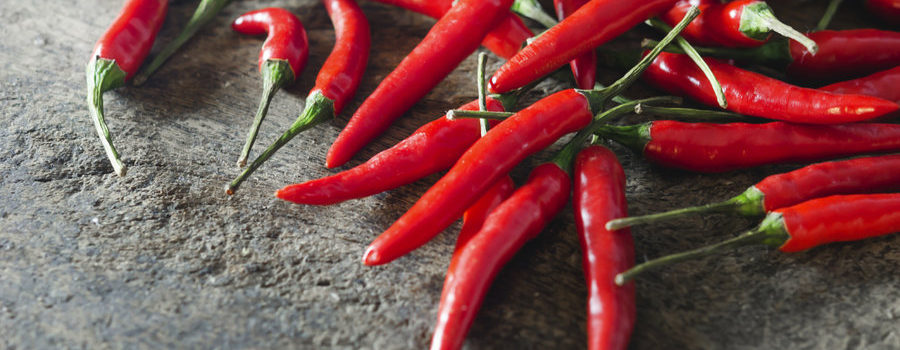The cultivation of chili peppers originated in the Americas about 6,100 years ago, a new study finds. Every plant species has its own characteristic starch grain – like a fingerprint – that can be used as a marker to identify the plant species. Now, by routinely analyzing fossilized starch samples from seven archaeological sites in Central and South America, researchers have identified the distinctive starch microfossil for chili peppers, and unintentionally documented the history of the peppers from about 6,000 years ago to 500 years ago. The researchers, led by Linda Perry of the Smithsonian National Museum of Natural History, also found that starch microfossils from chili peppers and from maize coexisted, which means the two plants “traveled” together in the tropics just like the corn-beans-squash trio did in North America.
BOTTOM LINE: Though researchers knew that chili peppers were important in many ancient cuisines, they had not known the origin and domestication history of these plants. “We now have the starch microfossil marker for chili peppers and we can trace its use in ancient American cuisines,” said Perry.
CAUTIONS: More work is required to clearly establish the earliest dates and specific regions associated with the origin of chili peppers and their evolution with society.
WHAT’S NEXT: In future projects, researchers hope to document exactly when chili peppers were first used and first domesticated. They also hope to identify the distinctive starch microfossils of the five different Capsicum species – which include jalapenos, bell peppers, and anaheims. So far Perry has identified only one – that of the hot rocoto pepper still grown in the Peruvian highlands.
WHERE TO FIND IT: Science, Feb. 16.
SENA DESAI GOPAL




Leave a Reply
Your email is safe with us.
You must be logged in to post a comment.